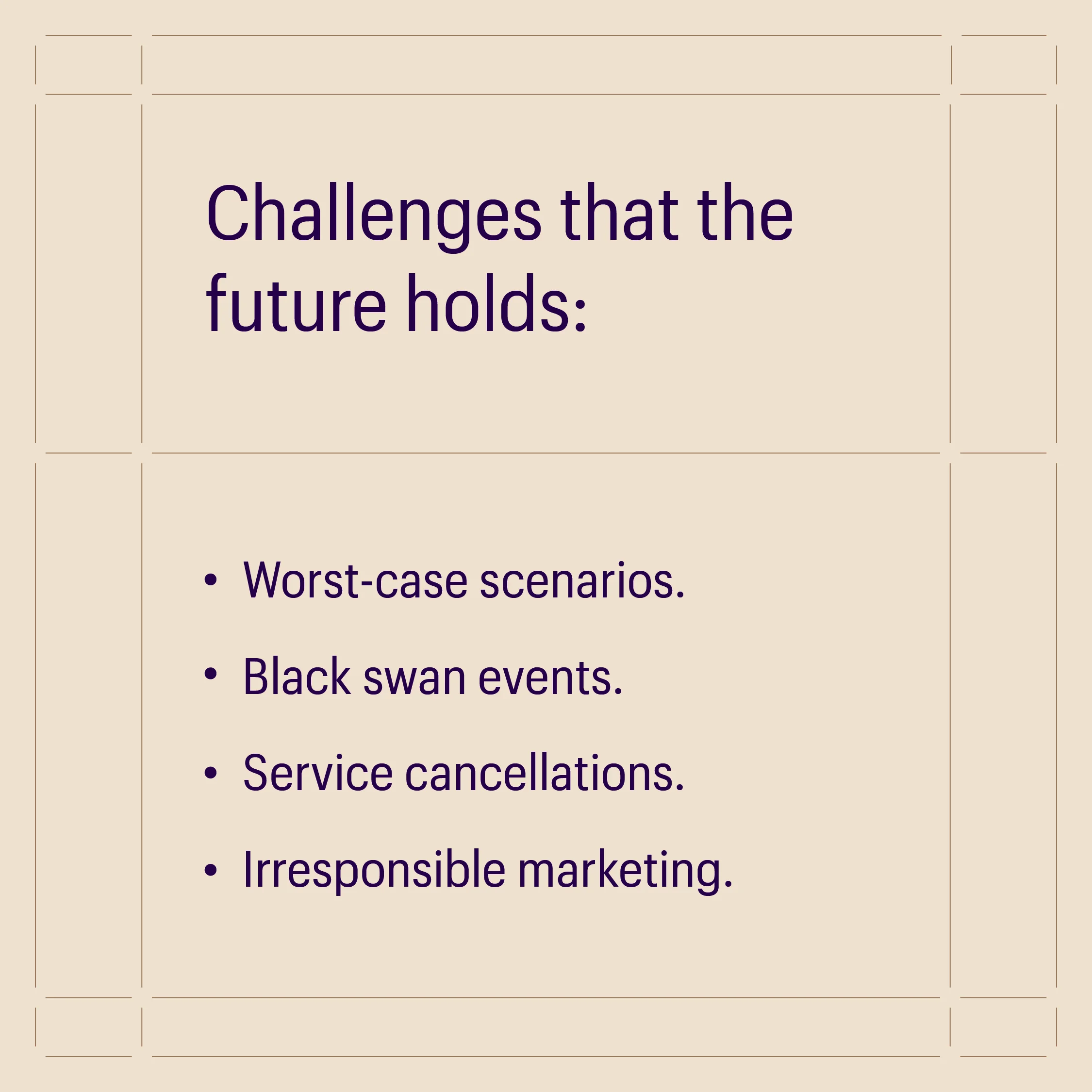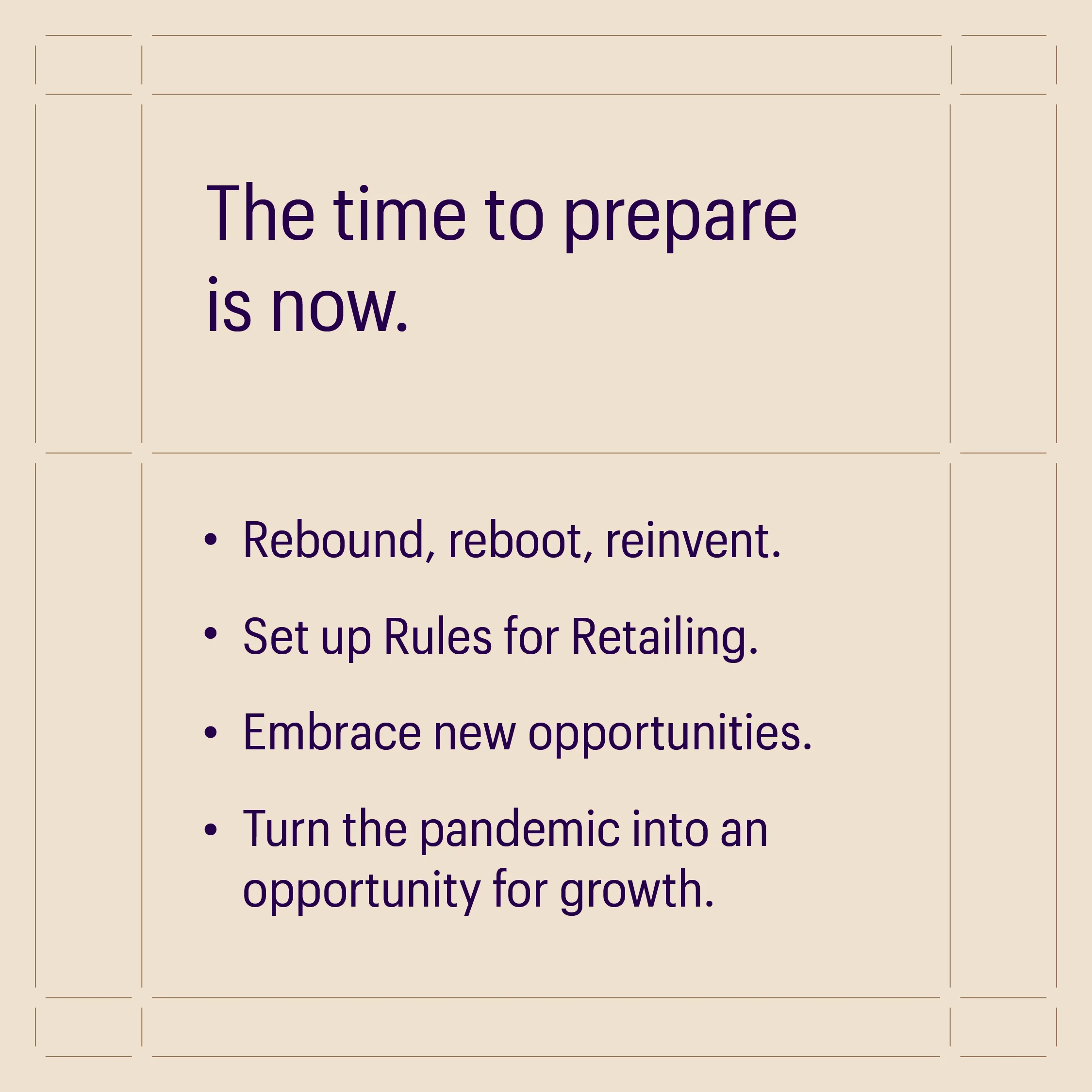In the previous installment of the article, we looked at the different ways in which the new normal could be assessed to identify the defining market factors, and also analyzed the methods that different businesses are employing to deal with the pandemic disruption. In the second article in this series, we will look at what the future holds in store for the market, how we can best anticipate the challenges that lay in store in the upcoming months, and ways in which we can prepare to swiftly adapt to market changes and turn the pandemic disruption into an opportunity for growth.
Calling this presently oscillating nature of consumer behavior daunting, would be an understatement. And retailers and supply chain systems are trying their very best to change their working patterns and aligning to the volatile marketspace created by the pandemic environment in the last four-five months. Through this two-part article we will address the concept of the ‘new normal,’ what it signifies about consumer behavior and how retail and supply chain systems can reinvent themselves and ensure sustenance in the new normal. Part 1 will delve into the ways in which the new normal can be assessed and analyze the methods that different businesses are employing to deal with the pandemic disruption.
A quick summary of the article:
- While organizations think they have rebounded, there is still a long way to go. The United States economy was even considered to be “lurching back to life,” and in May, a 17.7 percent rise was reported in sales. But with lockdowns being reinstated, and the number of cases increasing again, it was apparent that “repairing the economy” would still take a long while.
- In these times of uncertainty, there is one stark factor that largely differentiates stores managing to stay afloat – the ability to change from status quo and swiftly adapt to the newest ‘new normal,’ and in that stead, there is an active shift from being planned to being agile.
Anticipate:

Market fluctuations in the last few months have proven that these are unprecedented times and understandably, no one can list out the best way to prepare for the future. It is easy to fall for the numerous pitfalls that lay ahead, and this period is going to be a patience game. But we need to build resilience to see things through and anticipating the changes that we are likely to grapple with will help to stay prepared when they unfold. Here are some factors companies need to brainstorm over to brace themselves for what the future holds:
Worst-case scenarios: Global GDP growth in 2020 has been estimated at a negative 4.7%. It will be long before we can leverage accurate predictability of future events. All we can do now, is wait out the pandemic. Considering that the market undergoes weekly (or even daily) disruptions, now is not the time for impulsive decisions. Being hasty and taking swift decisions that soften the blow in the short-term are likely to result in severe ramifications in the long term.
Black swan events: Black swan events that have global consequences, leave an impact that takes a long while to recover. This pandemic is not the first, it will not be the last either. There is no way companies can fully prepare themselves for an economic impact of this magnitude. However, what we can do, is broaden our understanding of risk events. A recent article by The Diplomat observes that when author Nassim Nicholas Taleb initially referred to ‘black swan events’ in his 2007 book, “[his treatment of the] term was intended as a broader examination of how we make assumptions about risk and how we can better prepare ourselves for earth-shattering developments, rather than to act as a prediction scoring guide.”
Service cancellations: Subscription services of premium brands, especially for essential products, might witness a decline post-COVID-19, and might be affected by cancellations as soon as demand and supply resume normalcy, and consumers move back to traditional purchase patterns. Companies must understand that subscription cancellations will not be an overnight change, but rather a delayed effect that will unfold over the course of months, in tandem with the spread of the pandemic. We must be prepared to deal with the same and have measures in place to reduce cancellation numbers.
Irresponsible marketing: is a major focus on health-related products and services at the moment, with COVID-19 updates forming a major portion of the headlines every day and needless to say, many might be tempted to take advantage of the situation and market their products. Platforms like Amazon have reportedly banned keyword tagging related to the coronavirus and have banned advertisers who are making any claims concerning the pandemic and trying to capitalize on the situation. However, despite companies taking measures there are still consumers vulnerable to situations like these. Alternatively, retailers and supply chain managers should work towards creating educational content that customers can rely on. Creating a trustable brand presence in the coming months will not only result in pay-offs once the economy bounces back, but will also enable the creation of long-term customer relationships.
Adapt:

Through the course of the article, we have discussed how indiscernible the future is. And while that implies that there is no sure shot way of predicting what the future holds, companies must equip themselves with the needed knowledge and skills to adapt as swiftly as possible to any market changes that take place in the coming months. There are no straight-jacketed answers, but only proposed methods through which we can deal with the repercussions of the pandemic. Revisiting the concepts deployed in the 2008 global recession is a good point to begin the process of adapting. Preparing for different plausible future scenarios is yet another important goal to work towards.
Here’s closer look at some approaches that help you adapt to upcoming changes and prepare to come out of the pandemic stronger than before:
Rebound, Reboot, Reinvent: by Scott McKenzie, Nielsen Intelligence Leader, in a recent seminar, this three-tiered approach lists down the following three business conditions. 1) Rebounding to normalcy through reopening of schools, colleges, malls, other social set-ups in the third quarter of 2020; 2) Rebooting to a medium-term scenario that unfolds by the end of the year; 3) Reinventing existing processes for the long-term, aiming for a complete return to normalcy in the first half of 2021.
These are considered the three most probable scenarios likely to unfold and firms that are looking to set-up possible courses of action for future, can look at creating a solution for each of these. These predictions are not set in stone, but in preparing for these scenarios, companies might be able to better deal with whatever risk event the future has in store.
Set up Rules for Retailing: The Harvard Business Review listed out five rules in the aftermath of the 2008 recession:
(i)Analyze the Headroom, i.e, “market share you don’t have minus market share you won’t get.”
(ii) Work relentlessly to “identify and close their needs-offer gaps to win as much of their headroom” as possible
- Analyze good costs (essential to create value for customer) vs bad costs (costs that add no value, like investing in in-store seating for a retailer that primarily offers takeout services).
- Establishing cluster stores instead of a one-size-fits-all approach.
- Retool core processes
These rules can only provide a sense of direction for the different strategies that firms could employ in the coming months – the key is to keep experimenting until companies chance upon the operational formula that is most conducive to adapt to, swiftly.
Set up Rules for Retailing: The Harvard Business Review listed out five rules in the aftermath of the 2008 recession:
Embrace new technologies: an article by the World Economic Forum clearly observes, the supply chain disruption problem “isn’t driven by human error. Supply chains have become so complex that only machines can do the work of keeping track of all this information. To ease the burden, supply chains need to leverage key technologies.”
Exploring new technologies and taking the time during the pandemic disruption can help weather possible future disruptions. Furthermore, rethinking budgets to account for future digital transformations would help companies make the transition once things eventually return to a stable situation, and enable scaling operations for long-term growth and development.
- Turn the pandemic into an opportunity for growth: Pandemics like this act as catalysts for a sea of change, that holds immense potential for growth. Firms that have weathered such storms previously are testament to the same. Case in point: Alibaba.
When the SARS pandemic took place in 2003, Alibaba was a nascent online B2B marketplace. Swift decisions to implement Work-From-Home, and have senior leadership collaborating in a common space, helped the team launch the Taobao site on time. Alibaba benefited from the internet sales-driven market, and soon grew into one of the world’s largest e-commerce companies.
In the contemporary world where e-commerce is almost commonplace, it would be challenging to leverage growth prospects. Alibaba themselves have taken an economic hit – the company’s stock price down nearly 12% since the start of 2020. However, their leadership is certain that as digitization increases, it will only help the company’s digital economy flourish in the long run.
Like Alibaba, firms should be quick and agile to identify opportunities for growth and build on them, not only to help get through the current scenario, but to also work towards the sustenance and profitability in the coming years.
Conclusion:
How can we decode the factors required to determine real-time at sales? How can we convert companies to a reactive operational strategy? How can we constantly realign to the changing shifts in demand? How do we identify what to do differently today as opposed to yesterday? And how can retailers and manufacturers keep up with changing consumer behavior? These are the questions we must continue to grapple with, every day, as the pandemic continues to disrupt the possibility of formulating sure-shot solutions.
As mentioned before, it is a patience game and the only constant is, change. The faster we adapt, the more efficient and resilient we become. Right now, we can only leverage learnings of the past, prepare for the most possible scenarios, and hone our ability to deal with risk events.
The future is uncertain, and there is an hourly struggle to understand changing market situations. In this phase of unpredictability, reinventing is the new way of surviving and sustaining in the market. We must assess, analyze, anticipate and adapt every single day. With constant reinvention, we can ensure that we stay relevant to the market and the consumers. And the way in which we reinvent in the coming months will not only define how we can persevere through the pandemic, but also determine our ability to deal with future risk events and turn them into opportunities for growth.
